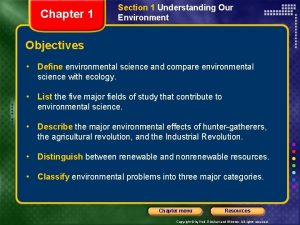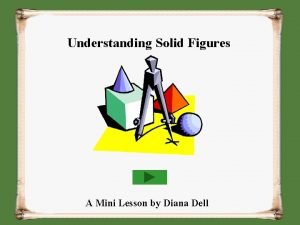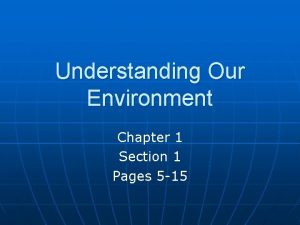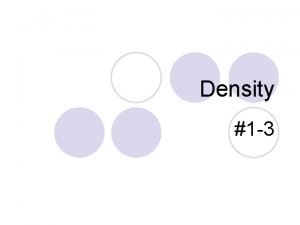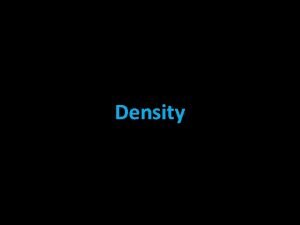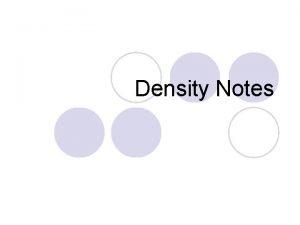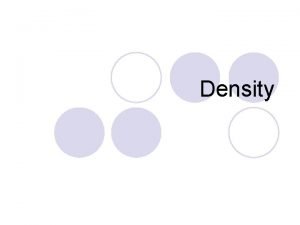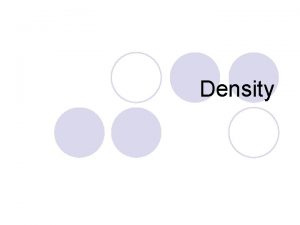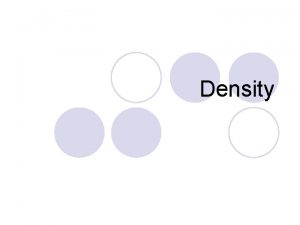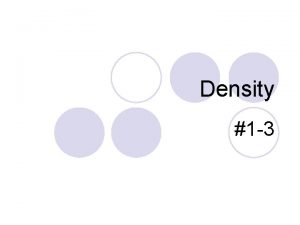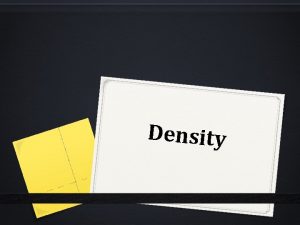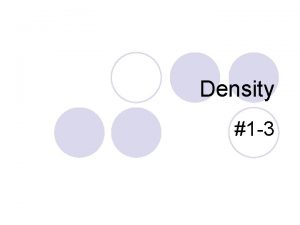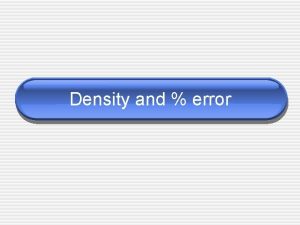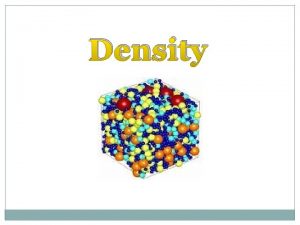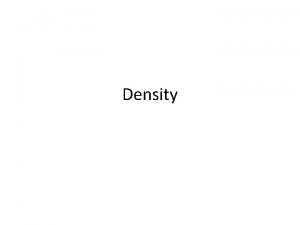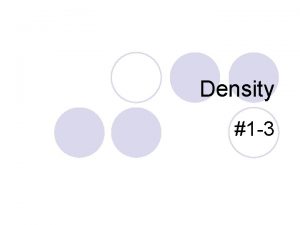Understanding Density What is density l Density is

















- Slides: 17

Understanding Density

What is density? l Density is a comparison of how much matter there is in a certain amount of space. l Density is defined as the ratio of mass to the volume of a particular substance. This box is very dense with all of the molecules packed closely together.

Which one is more dense? l Which square is more dense?

Which one is more dense? l Which square is more dense?

Which one is more dense? l Now which one is more dense?

Which one is more dense? l Now which one is more dense?

Density is a physical property l Density is a physical property of matter l Each substance has a specific density which can be used to help determine what a substance is Gold has a density of 19. 30 g/cm 3 so it feels very heavy in comparison to other materials.

Water l Pure water has a density of 1. 0 g/m. L l Anything with a density greater than one will sink, less than one will float

What is density? l Density = mass OR volume mass ÷ volume. l Units for density: g or g cm 3 m. L ALWAYS REMEMBER UNITS! . l Why are these the units for density? l Mass is measured in grams, and volume can be measured in cubic centimeters (cm 3) or milliliters (m. L).

Mass over volume: The m at the top stands for mass, with the v at the bottom for volume.

Let’s try a density problem l Frank has a paper clip. It has a mass of 9 g and a volume of 3 cm 3. What is its density? l So divide the mass 9 g by the volume 3 cm 3 9 3 = 3 g/cm 3

Work this problem. l Jack has a rock. The rock has a mass of 6 g and a volume of 3 cm 3. What is the density of the rock? Mass = 6 Volume = 3 So 6 3 = 2 g/cm 3

Now, try one more. l Alicia has a watch. It has a mass of 4 g and a volume of 2 cm 3. What is the density of the watch? l 4/2=2 g/cm 3

Liquid Layers l If you pour together liquids that don’t mix and have different densities, they will form liquid layers. l The liquid with the highest density will be on the bottom. l The liquid with the lowest density will be on the top.

Liquid Layers l Check out this picture from your book. Which layer has the highest density? l Which layer has the lowest density? l Imagine that the liquids have the following densities: ¡ 10 g/cm 3. ¡ 6 g/cm 3. 3 g/cm 3. 5 g/cm 3. l What is the density of the green layer? l 10 g/cm 3

Liquid Layers – Try with your neighbor l Which liquid has the highest density? syrup l Which liquid has the lowest density? oil

Answer the following: l What is the formula for density? l What happens if you pour together liquids that have different densities? l What is the density of water? l Why does oil float on water?
 Specific gravity calculation
Specific gravity calculation Nda full dac
Nda full dac Linear density of bcc 100
Linear density of bcc 100 Why is arithmetic density also called crude density?
Why is arithmetic density also called crude density? Physiological density vs arithmetic density
Physiological density vs arithmetic density Linear density and planar density
Linear density and planar density Understanding ftp
Understanding ftp Assess your understanding
Assess your understanding Lesson 2 measurement and scientific tools answer key
Lesson 2 measurement and scientific tools answer key Understanding questions examples
Understanding questions examples Section 1 understanding our environment answer key
Section 1 understanding our environment answer key Understanding your health and wellness chapter 1
Understanding your health and wellness chapter 1 Enduring understanding examples
Enduring understanding examples Understanding hazards and risks
Understanding hazards and risks Synoptic charts geography
Synoptic charts geography Problem understanding adalah
Problem understanding adalah What's the difference between a prism and a pyramid
What's the difference between a prism and a pyramid Chapter 1 section 1 understanding our environment answers
Chapter 1 section 1 understanding our environment answers










